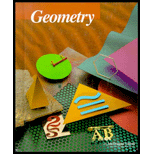
Concept explainers
a
To sketch: a line which shows a set of points equidistant from F and T as shown in the figure below.
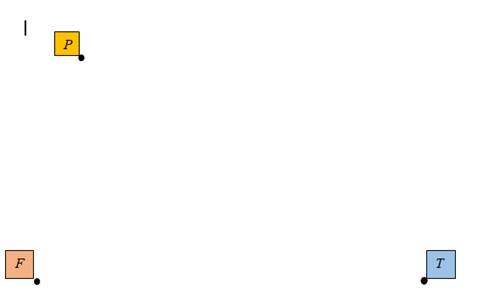
a
Explanation of Solution
Given information: Points F,T and P are shown as below in the diagram and a sketch has to be made of a line that specifies a set of points which are equidistant from F and T .
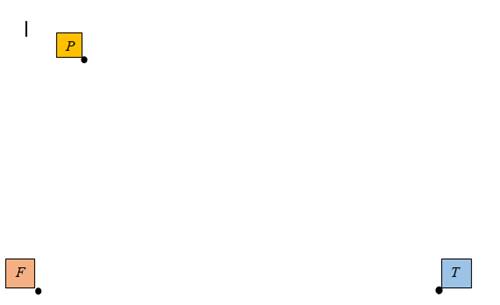
Sketch: Take a centimeter ruler and find a point midway between F and T and mark it. Now draw a line through that point perpendicular to the line joining F and T, which is the required line.
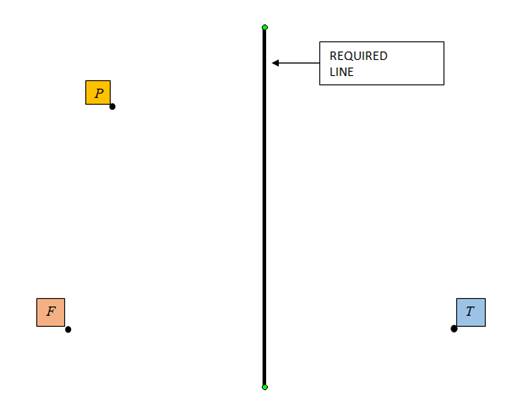
Interpretation: The required line is equidistant from points F and T which can be checked using a centimeter ruler.
b
To sketch: a
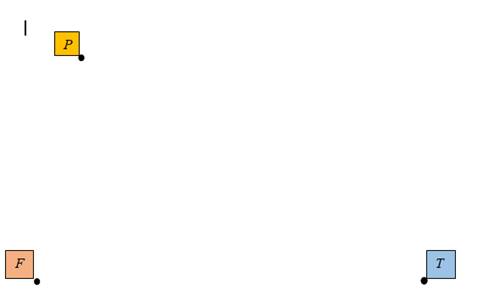
b
Explanation of Solution
Given information: Points F, T and P are shown as below in the diagram and a sketch has to be made of a circle whose radius is 2 cm and the center is at P as shown below.
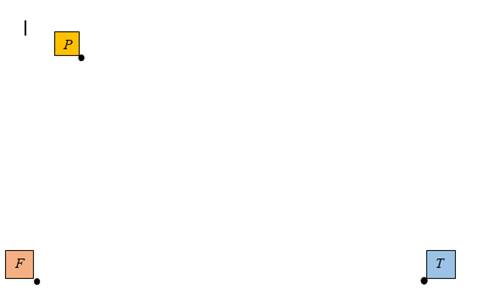
Sketch: Use a ruler to set the distance from the point of the compass needle to the pencil's lead at 2 cm. Place the compass needle at P and rotate it about 360 degrees. The required object in the plane is a circle of radius 2 cm.
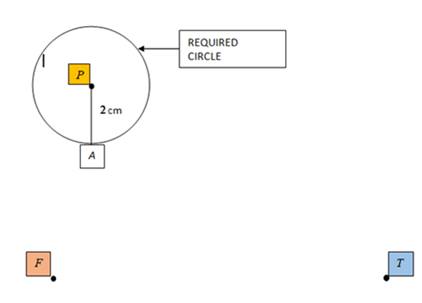
Interpretation: The circle so formed has a radius of 2 cm which can be checked by a centimeter ruler.
c
To sketch: the points 2 cm from P which are equidistant from F and T as shown in the figure below,
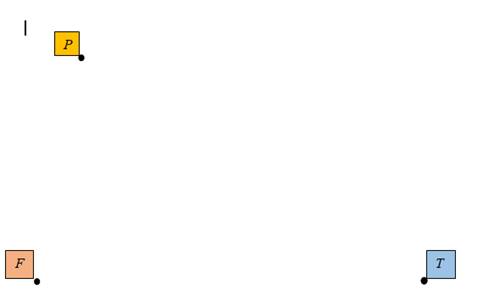
c
Explanation of Solution
Given information: Points F,T and P are shown as below in the diagram; it is to be found that how many points are equidistant from F and T and are also 2 cm away from P.
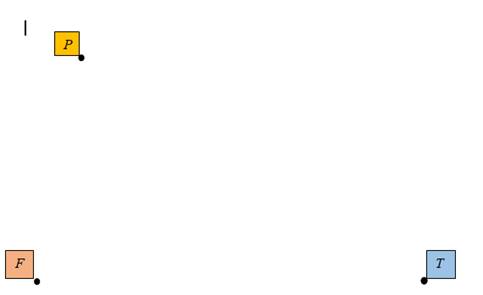
Graph: Take a centimeter ruler and find a point midway between F and T and mark it. Now draw a line through that point perpendicular to the line joining F and T. Use a ruler to set the distance from the point of the compass needle to the pencil's lead at 2 cm. Place the compass needle at P and rotate it about 360 degrees. The required object in the plane is a circle of radius 2 cm. But it does not cross the line joining F and T even once.
So there are no point of intersection obtained as a result.
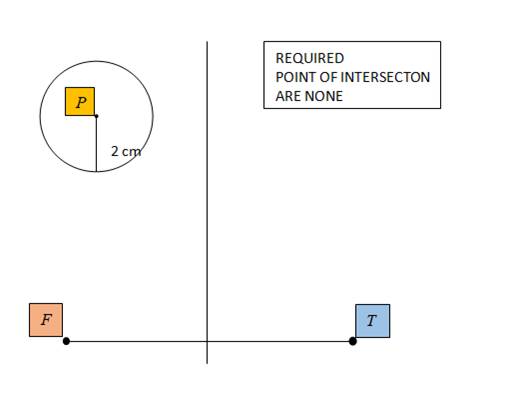
Interpretation: There are no points which are equidistant from F and T and 2 cm away from P.
Chapter 1 Solutions
McDougal Littell Jurgensen Geometry: Student Edition Geometry
Additional Math Textbook Solutions
Elementary Statistics: Picturing the World (7th Edition)
Thinking Mathematically (6th Edition)
Precalculus
Elementary Statistics (13th Edition)
Elementary Statistics
College Algebra with Modeling & Visualization (5th Edition)
- Can someone help me with this please?arrow_forwardMariela is in her classroom and looking out of a window at a tree, which is 20 feet away. Mariela’s line of sight to the top of the tree creates a 42° angle of elevation, and her line of sight to the base of the tree creates a 31° angle of depression. What is the height of the tree, rounded to the nearest foot? Be sure to show your work to explain how you got your answer.arrow_forward1arrow_forward
 Elementary Geometry For College Students, 7eGeometryISBN:9781337614085Author:Alexander, Daniel C.; Koeberlein, Geralyn M.Publisher:Cengage,
Elementary Geometry For College Students, 7eGeometryISBN:9781337614085Author:Alexander, Daniel C.; Koeberlein, Geralyn M.Publisher:Cengage, Elementary Geometry for College StudentsGeometryISBN:9781285195698Author:Daniel C. Alexander, Geralyn M. KoeberleinPublisher:Cengage Learning
Elementary Geometry for College StudentsGeometryISBN:9781285195698Author:Daniel C. Alexander, Geralyn M. KoeberleinPublisher:Cengage Learning

